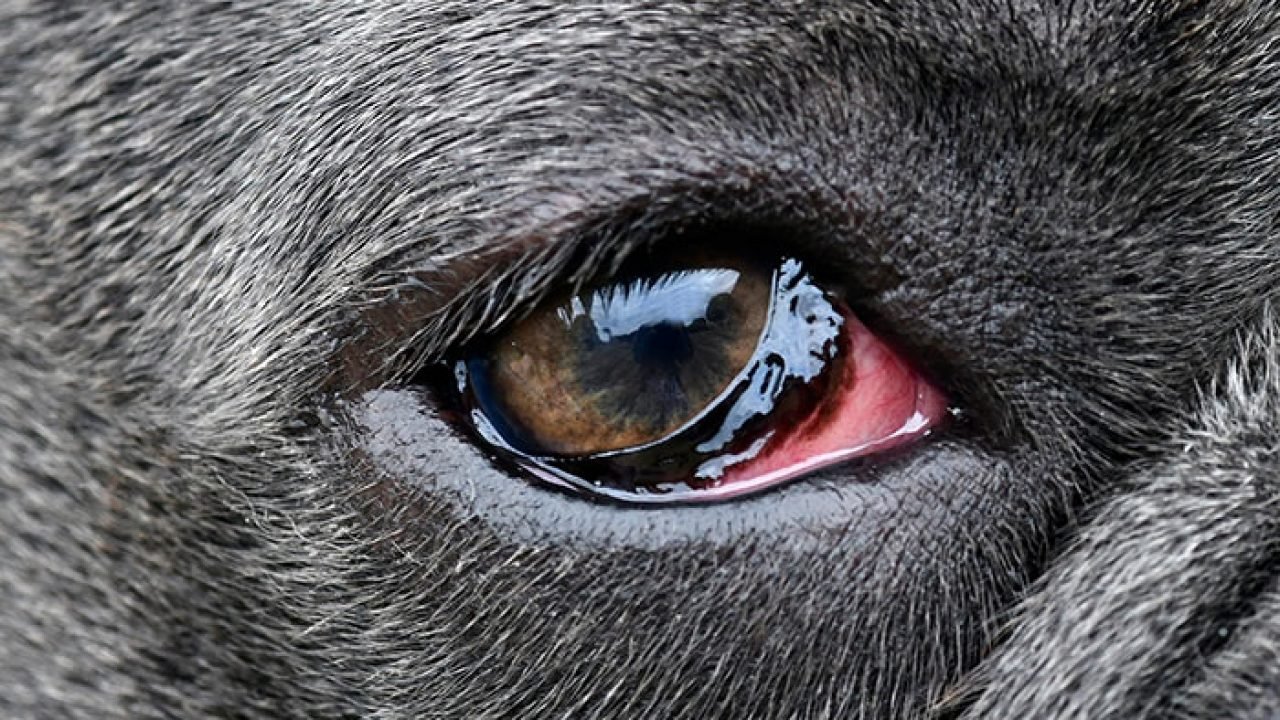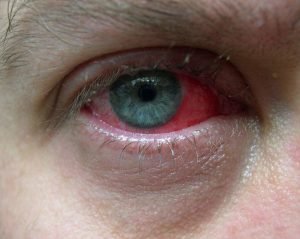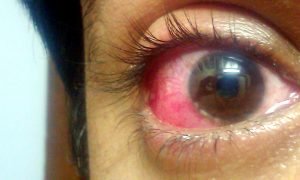Conjunctivitis: Pink Eye

What Is Conjunctivitis?
The transparent membrane (conjunctiva) that lines your eyelid and protects the white portion of your eyeball becomes inflamed or infected with pink eye (conjunctivitis). The conjunctiva’s small blood vessels become more visible when they become inflamed. This causes the reddish or pink appearance of your eyes. Birds are frequent carriers of conjunctivitis and often spread the disease to humans and pets.
A viral/bacterial infection, an allergic reaction, or an incompletely opened tear duct in babies are the most common causes of pink eye. Pink eye can be bothersome, but it rarely causes vision problems. Pink eye can be relieved with the right treatments. Because pink eye is contagious, it is best to get it diagnosed and treated as soon as possible. 1Go To Source mayoclinic.org -“Pink eye (conjunctivitis)”
Learn More: What Diseases Do Animals Carry?
What Species Are Affected By Conjunctivitis?
Excess blinking is the first sign of pinkeye infection in an animal, followed by tearing of the affected eye or eyes, which causes the region around the eyes to become wet. The membranes of the eyes become inflamed and red. The animal wants to remain in the shade or hide its face in a dark corner because light hurts its eyes. Birds with conjunctivitis will have red bums on their beaks or near their eyes.
Animals that commonly contract pink eye include:
- Birds
- Dogs
- Cat
- Cows
- Horses
How Is Conjunctivitis Spread?

Similar to other infectious and bacterial infections that can be transmitted, a pink eye infection can be passed on person to person, animal to person, or animal to animal. For viral or bacterial conjunctivitis, the incubation period (the time between infection and onset of symptoms) is around 24 to 72 hours.
You can get pink eye if you touch something with the virus or bacteria on it and then touch your eyes. Most bacteria can survive for up to eight hours on a surface, but some can live for many days. Most viruses can live on a surface for a few days, but some can last up to two months. Birds will spread the disease by dropping feces on areas frequented by humans. An example of this is birds dropping covering a car. A human then touches their car (covered in conjunctivitis bacteria) and then touches their eyes.
Near touch, such as a handshake, embrace, or kiss may also spread the infection to others. The infection can also be transmitted by coughing and sneezing. If you wear contact lenses, particularly extended-wear contact lenses, you’re more likely to get pink eye. This is because bacteria can live and grow on the lenses.
Can Humans Or Pets Contract Conjunctivitis?
Pink eye can affect dogs and cats of all ages, and it can even appear on its own. An underlying eye disorder may also be the cause. Although the infection usually begins in one eye, it can become infectious and spread to the uninfected eye in rare cases. Dogs that come into contact with birds or their feces, often contract this disease. It is important to have your pet checked by a veterinarian if you think your pet is suffering from pink eye. They will assess the form, cause, and seriousness of the problem, as well as a recovery plan to bring your pet back to full health.
What Are The Visible Signs Of Conjunctivitis?
The following are signs and symptoms of pink eye:
- Light sensitivity has increased.
- Either or both eyes have a gritty sensation.
- The white of the eye or the inner eyelid may be red, and tearing has increased.
- Some ophthalmic discharge (green or white).
- Eyelids that are swollen.
- Eyes that itch (especially in pink eye caused by allergies).
- A thick yellow discharge forms a crust over the eyelashes, particularly after sleeping (in conjunctivitis caused by bacteria).
- Eyes that are on fire (especially in pink eye caused by chemicals and irritants).
- Vision is hazy.
- Eyelids that are swollen. 2Go To Source my.clevelandclinic.org -“Pink Eye (Conjunctivitis)”
Wildlife Conjunctivitis Symptoms
Squinting, excessive blinking, redness, or swelling around the eyes are the most common conjunctivitis symptoms in wildlife. Conjunctivitis affects both eyes much of the time, but only one eye may be affected in some cases. Other symptoms such as nasal discharge, sneezing, or coughing can accompany conjunctivitis. Birds will have red scabs around their eyes and beak.
How Harmful Is Conjunctivitis?

Conjunctivitis, especially allergic conjunctivitis, can be frustrating, but it rarely poses a significant health risk. Conjunctivitis complications are uncommon, but when they do occur, they may be severe. A moderate case of allergic conjunctivitis can cause scarring in the eye, whereas infective conjunctivitis can spread to other parts of the body, causing more serious secondary infections like meningitis.
This disease poses a larger threat to birds and other animals. Pets often go blind if their conjunctivitis is left untreated. Wild animals that can’t get veterinary treatment often go blind and die.
How To Prevent Conjunctivitis?
When handling wild animals or their droppings, clean your hands and clothes thoroughly. Make sure not to touch your eyes until you have cleaned up. The human body can also be infected through the nose and mouth, so it’s important to be aware of this when dealing with animals.
Pets are also at risk of contracting conjunctivitis, and the best way to prevent them from contracting the disease is by keeping them away from wild animals. Birds are common carriers of this disease, and a backyard birdfeeder can be a superspreader of conjunctivitis. Completely remove the bird feeder to keep birds away or frequently change out the feed to minimize risk. Bird dropping in the yard often spread the disease to pets, so it’s important to keep the yard clean and bird-free.
If your property is filled with wild birds, contact a wildlife removal & exclusion professional for help. Animals Happen’s pre-qualified removal technicians will conduct an inspection of your home and create an exclusion plan specific for your home. They will also implement practices to ensure the birds won’t return in the future.
What To Do If You Or Your Pet Have Conjunctivitis?
Since this disease is highly contagious, it’s important to contact a physician at first sight of conjunctivitis. Stay away from people or pets until a health care professional can diagnose and treat your symptoms. If a pet has contracted conjunctivitis, isolate them and bring them to the vet. Animals will have different treatments than humans, and a veterinarian will know the best treatment option for your pet.
If your yard is filled with bird or bird feces, they likely are what gave you conjunctivitis. After taking care of yourself and your pets, contact a wildlife professional for help with the bird infestation. Allowing the birds to live around your home puts you at risk of contracting the disease again.
Sources:
- “Pink Eye (Conjunctivitis) – Symptoms and Causes.” Mayo Clinic, Mayo Foundation for Medical Education and Research, www.mayoclinic.org/diseases-conditions/pink-eye/symptoms-causes/syc-20376355. Accessed 23 Mar. 2021.
- “Pink Eye (Conjunctivitis): Causes, Symptoms, Treatment & Prevention.” Cleveland Clinic, Cleveland Clinic, my.clevelandclinic.org/health/diseases/8614-pink-eye-conjunctivitis. Accessed 23 Mar. 2021.
